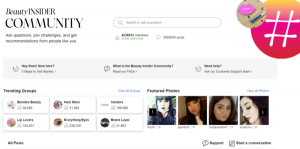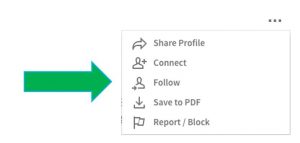Businesses usually discuss social media in the context of its ability to connect you with an audience and allow you to push out content related to your business. But another important factor of social media is its ability to let you listen, in a fairly unobtrusive way, to what your customers are saying.
The art of social listening (it’s one part art and one part science) is a valuable skill to develop. The idea isn’t new – it’s been actively discussed since 2008 and entire suites of tools have been developed in order to facilitate it. The core idea is to be able to report back in on customer discussions about your brand in real-time, and react if you need to.

stevepb / Pixabay
Social Media Listening Helps Business To Learn About Themselves
Whether using one of the existing mega-players or using a different strategy or toolset, social listening enables you at the click of a button to gather all the comments about your brand, to understand whether the predominant sentiment is positive or negative, whether it’s a trending or hot topic, and even what terms come up in relation to the brand and these discussions. But without a clear plan, while this data is interesting, it’s difficult to translate this into something that helps you build your business and achieve specific goals.
Here are five strategies to make sure that you get the most out of any specific social listening project:
Set Specific Goals before You Start
Why are you choosing to do a social listening project? What are you trying to learn? Who are you trying to reach/listen to? Who within your company needs these results? And most importantly, so what? Know in advance what decision making processes that the information is going to affect as well as how you plan to evaluate the information collected. For example, logical choices might be improving product features, addressing customer service complaints, tweaking messaging to address brand perceptions, developing new offerings, improving specific aspects of the customer experience, or understanding what people value about your products.

Tama66 / Pixabay
Validate Your Topic and Your Audience
In a sense, you can achieve the same kind of data digging as in a focus group setting, but with two clear exceptions. Social listening is predicated on the idea that people are talking about you online. First, you need to validate that the topic that you’re interested in learning about is actually being discussed. And then you need to verify that your target audience is discussing it online. For example, if you are an HR recruiting firm dealing with very high-end executives, they may not be talking about the high six-figure deals you arrange for them via Twitter or Facebook – whether due to time limitations, privacy considerations, or that simply not being a natural context for those conversations to occur. In this instance, a focus group or targeted interviews is a better way to go.
Be Clear On What You Measure
It’s easy to get caught up in things like “sentiment” and “voice share.” While these things are directionally helpful and one important output of a social listening exercise, the real actionable insights occur when you get beyond a sentiment analysis (where you pay attention to only the extremes of comments – extremely positive or extremely negative) and instead do a semantic analysis to understand the big themes and gist of the conversation that’s occurring. It is here you understand the specific issues that people are concerned with and the more complex relationships between topics.

TheDigitalArtist / Pixabay
Combine This with Other Data
Combine social listening with demographic and consumer data to get real insights into your customers. It’s particularly valuable to understand that the people discussing XYZ frustrations are centered in a given geographic area, represent parents between the ages of 25 and 30, or are newly married couples. This enriches your advertising and deepens the dialogue you can have with customers – which in turn has a positive impact on how much you can sell.
Take action
The critical thing for social listening to have an impact on your business is to take action on it. Use the data you collect to refine your messages, improve your processes, and set the parameters for future market and customer research. As one input into a process, social listening can provide an important set of insights to enable continuous improvements in your business.
Digital & Social Articles on Business 2 Community
(27)
Report Post





